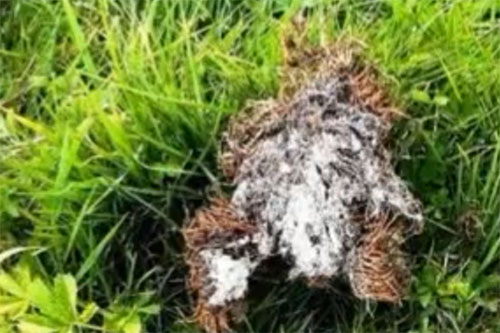FAAM 2021 was held virtually on the 17th and 18th of November, and was broadly a very interesting and engaging conference again. I say ‘broadly’ in no way intending to underplay it, as all of the talks were fascinating. However, Colette Willoughby’s day-two presentation on female analysts and what they have to endure was so raw and personal that it quite unavoidably dominated the whole event.
I have written about Colette’s talk separately, as it deserves to be considered separately and seriously by us all. However there were many other thought-provoking and informative talks throughout the programme: here are some of the highlights.
The conference started with a fascinating, deep look into the marriage of cutting edge new technologies to tried and tested Phase Contrast Microscopy (PCM) techniques. Frontier, Ethos and xRapid all had slightly different takes on enhancing PCM with artificial intelligence and robotics, to improve consistency, accuracy and speed.
That today’s PCM process is quite straightforward probably shouldn’t be surprising, given that it’s a technology that predates WW2. For asbestos, the analyst looks down the microscope and carefully looks for any fibres that follow the accepted rules as to what qualifies as asbestos. They count the number that fall within a defined area in the middle of their view (or field), then move this view randomly and make another count, adding to the total. This is repeated a given number of times to give a total number of asbestos fibres in a given number of fields.
The weakest link
That’s the process, but it’s important to look at the problems humans bring to it. I can testify to the first flaw, which is that the mark I eyeball is of varying quality – and my eyes are not what they were. So our ability to see the very fine fibres will vary. The rules as to what ‘counts’ as a fibre are straight forward, but we have to apply them correctly every time.
In addition, humans get tired, and tend to be less competent later in the day. We’re also flawed in that we have desires, and that we can be influenced by persuasion or threats that may consciously or otherwise affect which fields get counted. Add in the time pressures we all need to work under, and you will understand that the accuracy of on-site analysis is different to the work done in a lab with a nice cuppa to hand.
The application of AI and robotics has the potential to eliminate nearly all of these issues. Random is random, the rules are the rules, a calibrated eyeball mark II is accurate to a known degree – and it doesn’t get tired.
Automated analysis is also a lot quicker, at less than five minutes per sample. All of this really does promise a fascinating and exciting change for our analysts. Supported by AI, they will be able to concentrate on the really crucial visual inspection. And when that passes, the computer says no (or yes).
Ethos, based in Scotland, has taken the technology a step further with a kit that can take the sample as well. Currently the size of a pedal bin, the technology incorporates a very powerful pump, cartridges of filters, slides and a robotic microscope. Essentially you position it in the enclosure, press go and it takes the sample, mounts the slide and starts reading it. You can then move it to a new location whilst the analysis is ongoing and repeat.
Ethos says the turnaround for the first sample is only 20 minutes, but the current model is an advanced prototype and has limitations. Not least the fact that it looks heavy – making it a potential challenge for some analysts to heft around.
Rolling moss uncovers the stone?
The next really fascinating talk was a case study of a project being led by Colette. The site is a vast military storage facility, with 60 acres of asbestos cement roofing! All of it is past its anticipated life expectancy, but still, asbestos cement: what’s the problem?
In fact, one of the main issues is moss. As it turns out cement is not some inert binder – but an ideal source of nutrients. Here you can see how enthusiastically the site has been colonised.

There is some greenery, but there is also a lot of dead moss that eventually drops off. And with the dead moss comes pure asbestos fibre.

This material has contaminated walkways, roads and the nation’s fighting vehicles, and potentially exposed serving personnel. It’s an ideal nesting material for birds, who may have carried it away to contaminate nearby houses. Over the past two and a half years the project has evolved from assessment, to imaginative decontamination techniques.
The ECHA chamber
The afternoon of the first day was devoted to the European Chemical Agency (ECHA) subcommittee’s research report on a potential for a new occupational exposure level (OEL) for asbestos.
Just to rewind a bit, the report’s terms of reference were to:
It’s an important area for legislation, as different types of asbestos fibre are known to pose widely differing levels of threat. For example, there’s a nearly 500:1 jump in mesothelioma risk with exposure to crocidolite (blue) compared to chrysotile (white) asbestos.
However, the committee seems to have gone off-piste, and has instead chosen to answer entirely different questions with dubious scientific justification. Andrey Korchevskiy and Garry Burdett’s presentations laid bare the problems that would be encountered if the report was accepted.
Its first fundamentally flawed assumption is to assume that operatives won’t know which type of fibre they’re working with. Given that the ‘O’ in OEL stands for occupational, it’s a very sound argument that people working with asbestos rather should know its type. Assuming that, just because there’s a Europe-wide ban, all exposure will be a mixture of fibres will lead to a significant unnecessary exposure risk.
Yet despite this, the committee elected to average out the danger and assume a single risk for all fibre types. The result of this crude approach is to set the level of risk far too high for chrysotile, and far too low for amosite and crocidolite.
Unasked for – the report also discards proven PCM technology in favour of expensive and cumbersome electron microscopy. All the existing lifetime risk assessment data is based on PCM science, and it would be a stretch to apply the new technology to old data. Moreover, if this recommendation were adopted, it would likely also prove unachievable for poorer EU nations.
Day two
As I said, for me day two was dominated by Colette’s talk Female Analysts and Four-Stage Clearance Testing. I had expected this presentation to cover the practical issues that our female colleagues experience, but it was so much more disturbing and worrying than that. Focusing on her own experience and the testimony of four other analysts, Colette left her audience pretty stunned and speechless. I have covered her talk and the issues it raises separately, to give it the attention it deserves.
To sum up, the FAAM conference was yet again incredibly useful and informative. More than ever it was also thought-provoking, and demanding of self-reflection. The overall impression it gave was that change was coming – both due to the positive impact of new technologies, but also I hope in response to the now public darker side of our industry.
Tweet Share on Facebook Share on Linkedin